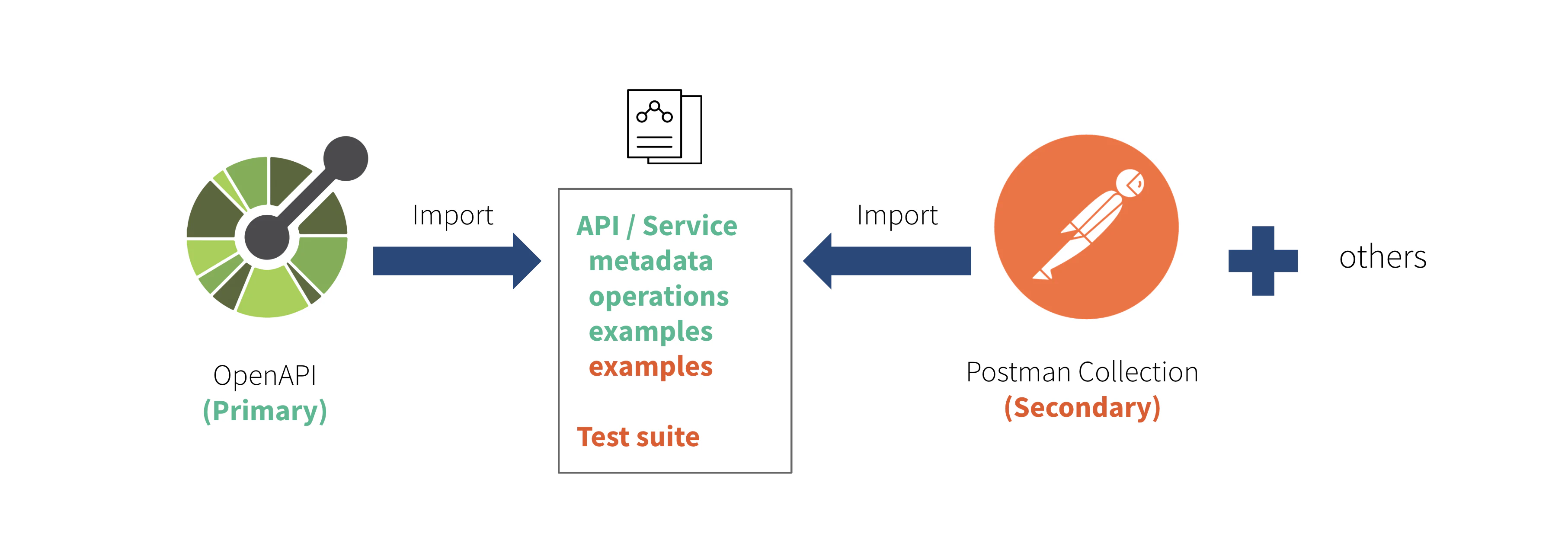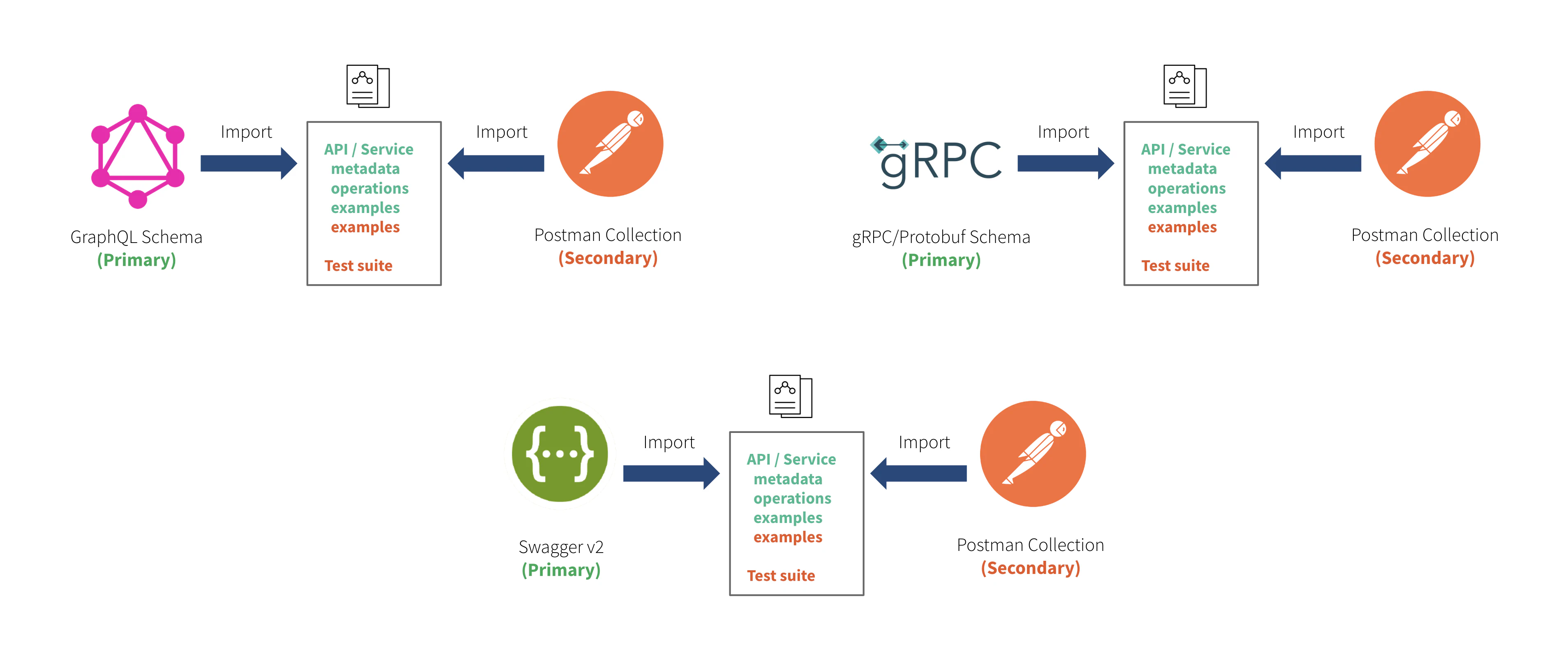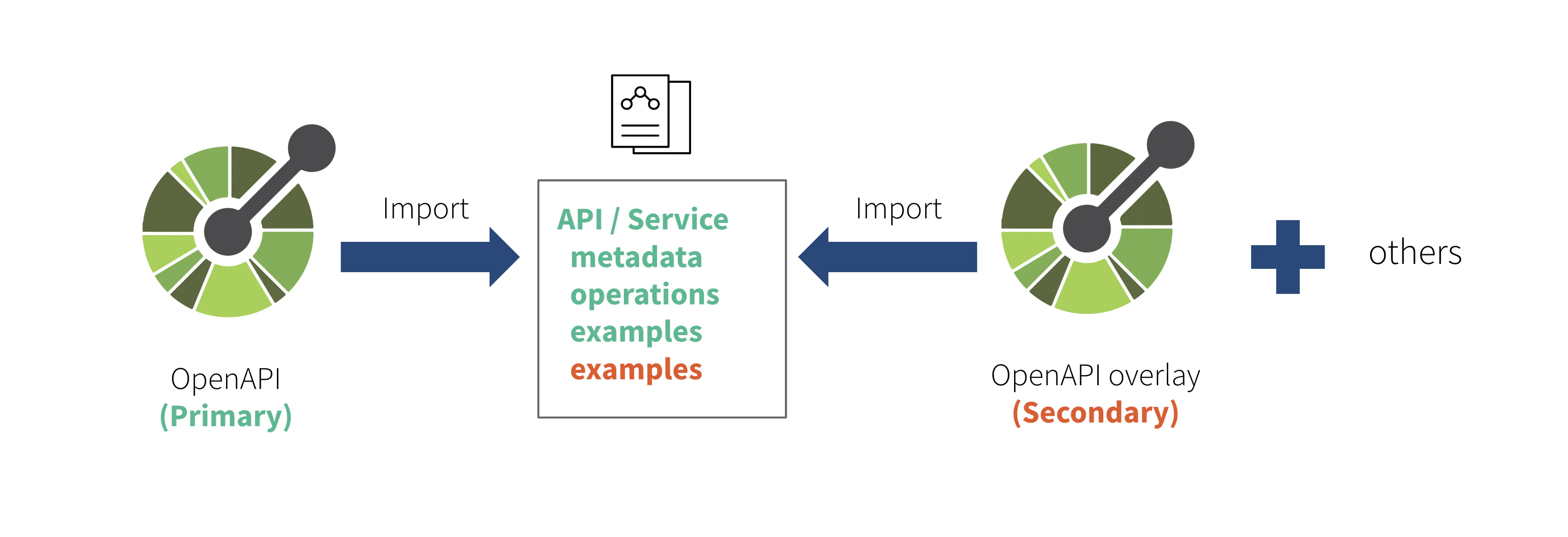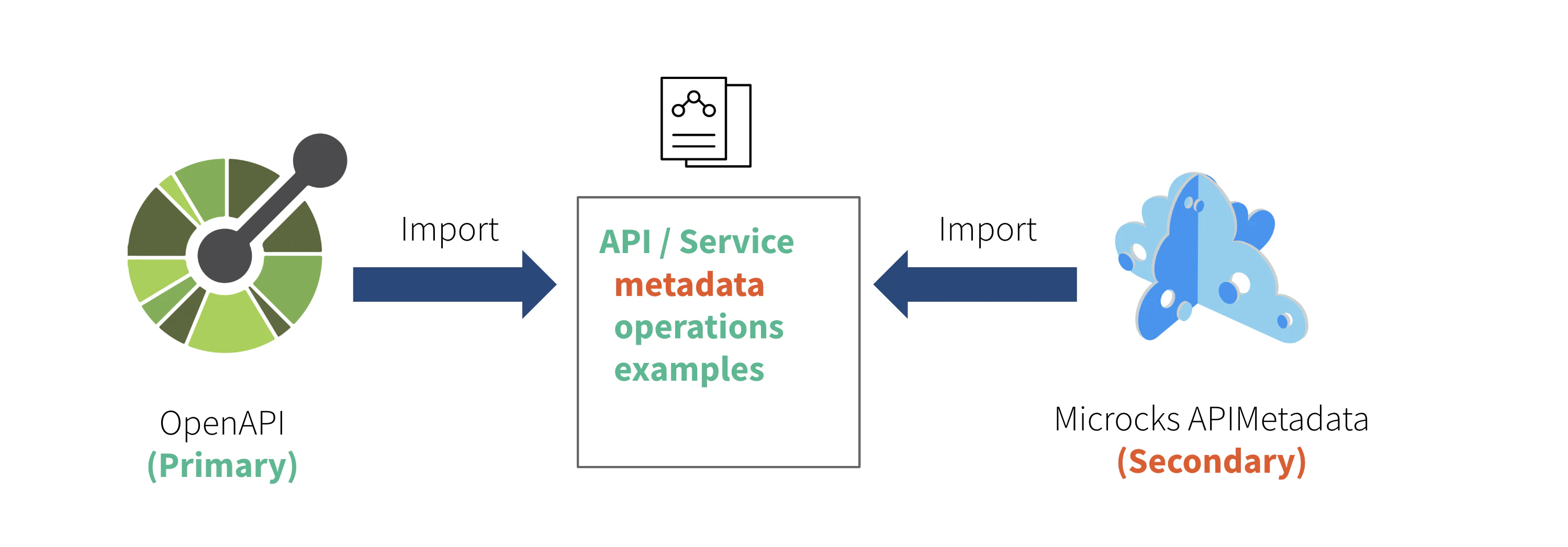Multi-artifacts support
🗓️ Last updated on May 27, 2024 | 3 | Improve this pageIntroduction
Microcks can have multiple artifacts (one primary and many secondary) mapping to one API definition. The primary one will bring API or Service and operation metadata and examples. The secondary ones will only enrich existing operations with new non-conflicting requests/responses and event samples.
A typical illustration of this may be using an OpenAPI specification as a primary one and then bringing one (or many) additional Postman collections to provide examples or test constraints.

In that case, Microcks is first fed with an OpenAPI file to get the main identification and structure information about the API or Service. This allows Microcks to initialize its internal metamodel for the discovered API. Then, Microcks will load the secondary artifacts and try to merge new non-conflicting information into the preexisting internal metamodel. The merging process is based on a compound key: the API name + version.
If not explicitly identified as primary or secondary, the default is to consider an imported artifact as the primary one. Microcks will simply ignore a secondary artifact if it doesn’t match any existing API name + version.
💡 Note that the
secondaryartifact is not necessarily a Postman Collection. It can also be some other artifacts like HTTP Archive Format (HAR) file, for example. Check our reference on Supported artifacts and conventions.
Usage for different protocols
For specific types of APIs and protocols, loading multiple artifacts for the same API definition may be necessary. Typically, when a single artifact is not able to handle a comprehensive set of examples, we need to rely on secondary artifacts to provide those examples.
It is then mandatory to use multiple artifacts in Microcks for GraphQL, gRPC and Swagger v2 defined APIs as the primary artifacts that provide the structure are not able to hold complete examples (yes, even Swagger v2 doesn’t allow complete examples 😉)

💡 Here again, the
secondaryartifact is not necessarily a Postman Collection just used for illustration purposes. Check our reference on Supported artifacts and conventions.
Also, note that multiple artifacts for one API definition don’t necessarily involve different specifications and file formats! The merging process in Microcks is generic, so you can use the same format multiple times. For example, you may want to use an OpenAPI specification as a primary one and apply some overlay by managing examples into other OpenAPI files.

One specific case of the merging process - that can be used in combination with any other artifact as a primary one - relates to the Microcks APIMetadata format. When importing such artifacts as secondary ones, the merging process involves the metadata of the API or Service and not the examples or tests, as illustrated below:

Opportunities
Microcks’ multi-artifact support is a flexible and powerful feature that opens many opportunities for managing your artifacts.
An emerging use case is that some people may have a single OpenAPI file containing only base/simple examples but manage complementary/advanced examples using, for example, a Postman Collection.
One can extend this base use case to implement some variations:
- Different Postman collections for different lifecycle environments, maintained in coordination with reference datasets,
- Different Postman collections for different API providers implementing a shared industrial standard (think of IoT Fiware implementation, but for different industry verticals),
- Different Postman collections for different API consumers that will allow consumer-driven contract testing.

Still Didn’t Find Your Answer?
Join our community and get the help you need. Engage with other members, ask questions, and share knowledge to resolve your queries and expand your understanding.
Join the community